
Discover the top 10 DeFi protocols by TVL and how TVL works, who leads, what’s driving growth, and how to use TVL in your due diligence.
Author: Akshat Thakur
Published On: Wed, 20 Aug 2025 15:17:09 GMT
When people compare DeFi protocols by TVL, they’re really asking: “Where is the most crypto capital parked, and why?” Total Value Locked (TVL) has become one of the most cited metrics in decentralized finance because it reflects how much trust, liquidity, and user commitment a protocol has attracted. By looking at DeFi TVL rankings, investors, builders, and analysts can quickly spot which protocols dominate the landscape and which emerging projects are gaining momentum.
Total Value Locked (TVL) is the total dollar value of crypto assets deposited in a DeFi protocol’s smart contracts—across lending pools, staking contracts, liquidity pools, and restaking modules. Because it multiplies on-chain balances by live market prices, TVL reflects both capital commitment and the liquidity depth available for users.
TVL is a quick gauge of adoption and trust. Higher TVL usually implies:
Still, it is not a perfect signal. Incentives can inflate TVL, and raw totals say little about decentralization, revenue quality, or security posture.
Bridged TVL is the value escrowed in cross-chain bridges so assets can circulate on other networks. For a protocol, large shares of bridged assets can boost raw TVL without improving native liquidity quality, useful context when comparing DeFi protocols by TVL across multiple chains.
What it does: Lido issues stETH for staked ETH, letting users keep liquidity while earning staking rewards. stETH is widely accepted as collateral across DeFi, turning stakers into active participants.
Why TVL is high:
Risks to watch:
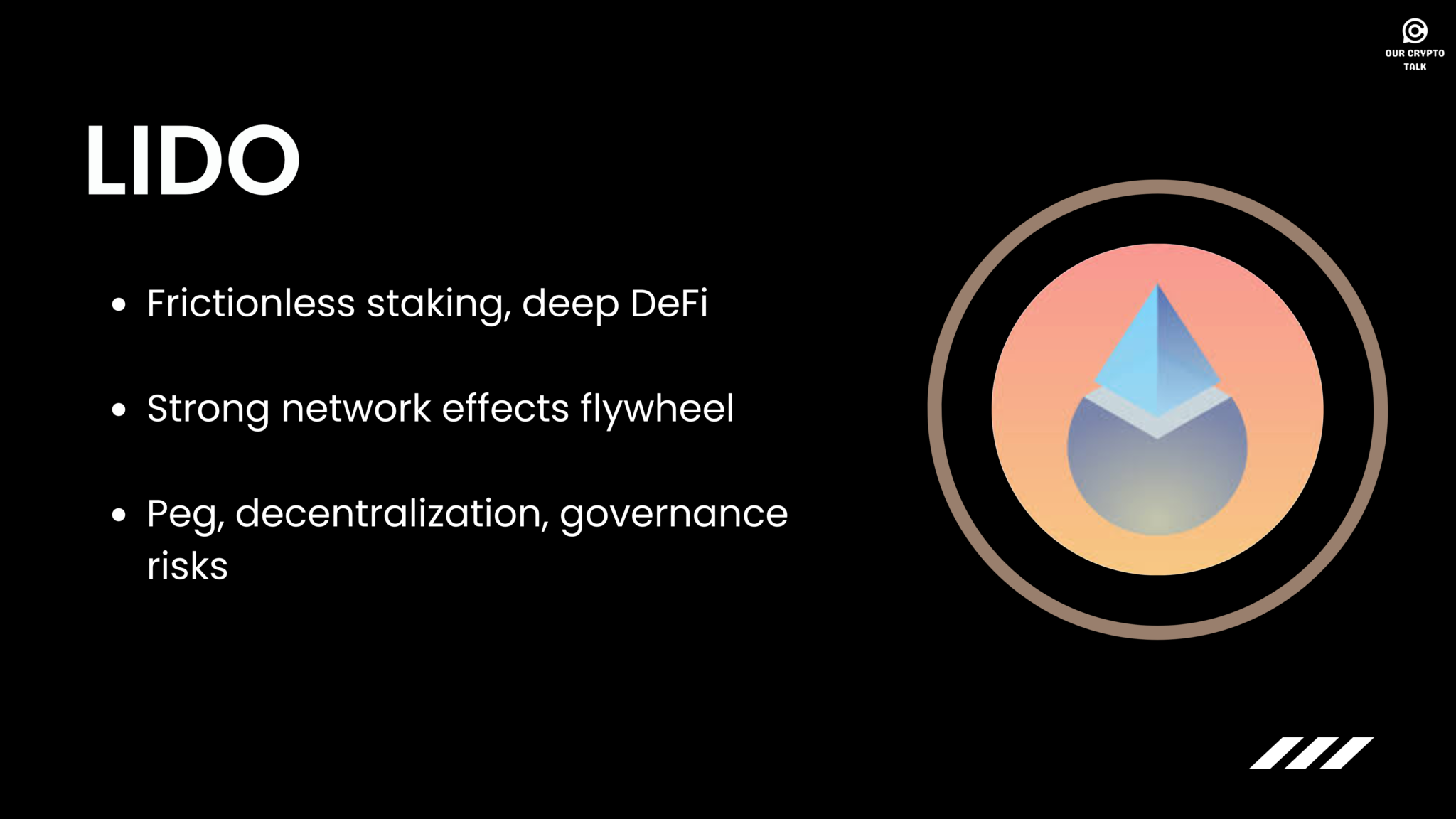
What it does: Aave is a non-custodial money market. Users supply assets to earn yield; borrowers post over-collateralized loans at variable or stable rates. It runs across many networks with risk “isolation” for long-tail assets and E-mode (high efficiency) for correlated collateral.
Why TVL is high:
Risks to watch: Interest-rate volatility and oracle dependencies; long-tail collaterals; governance decisions impacting caps and risk tiers.
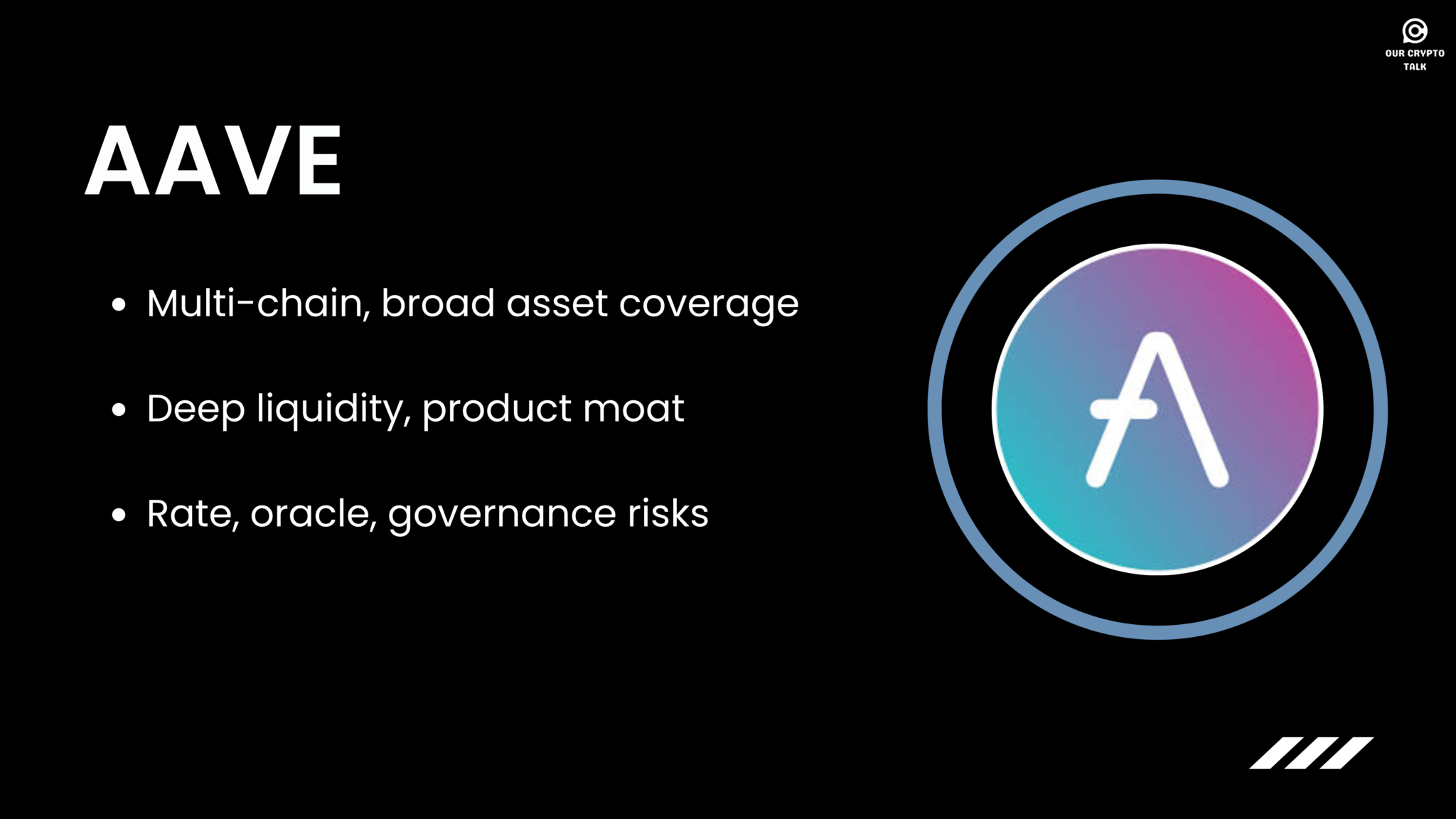
What it does: ether.fi offers self-custodial ETH staking where users retain key control through smart-contract mechanisms, issuing liquid staking and restaking receipts usable across DeFi.
Why TVL is high:
Risks to watch:
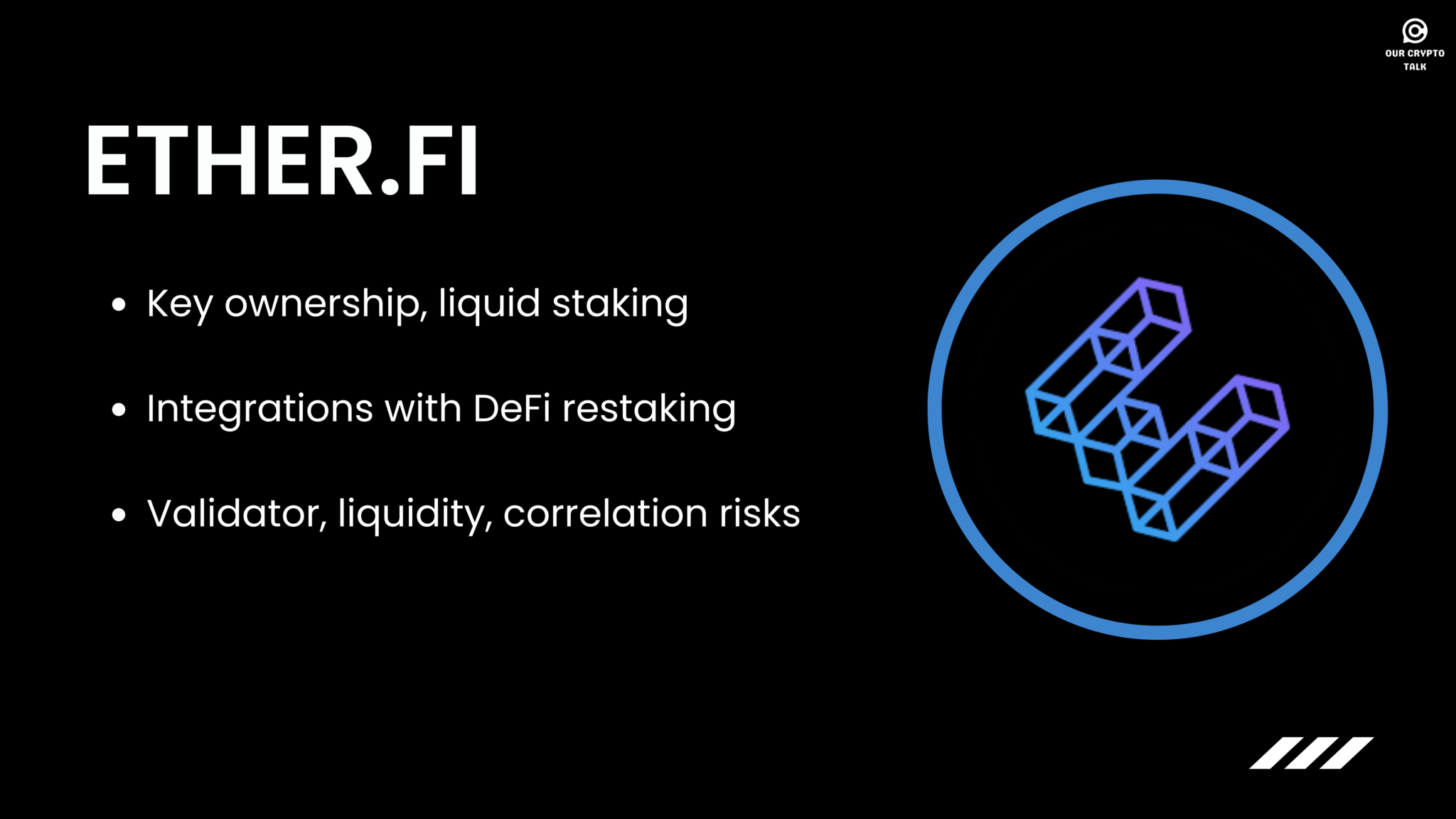
What it does: Ethena combines delta-hedged positions and yield strategies to produce synthetic dollar exposure and yield-bearing instruments.
Why TVL is high:
Risks to watch:
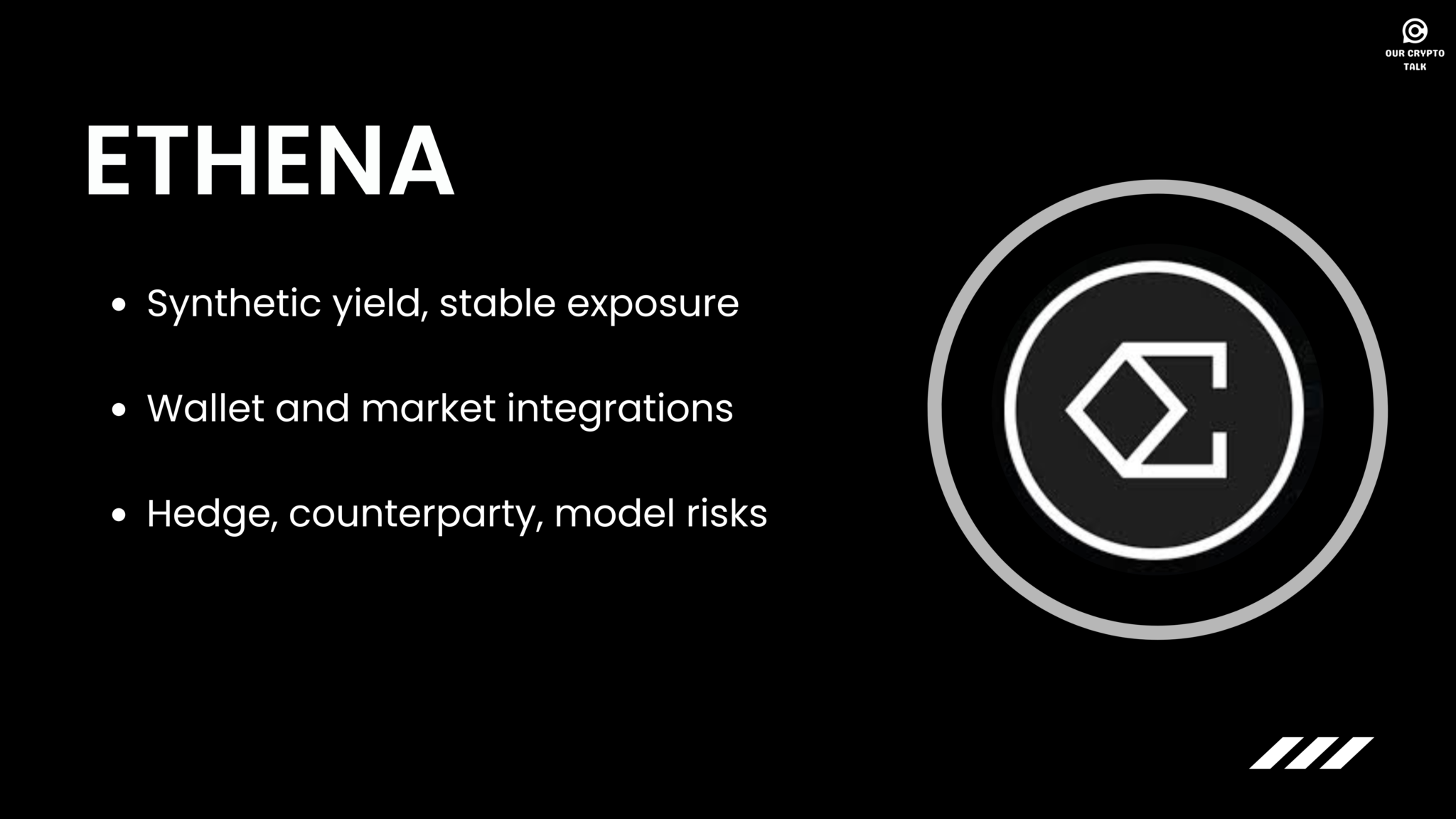
What it does: Restaking lets users reuse staked ETH (or liquid staking tokens) to secure Actively Validated Services (AVSs) for extra yield. Think of it as re-pledging security to new networks with additional rewards.
Why TVL is high:
Risks to watch:
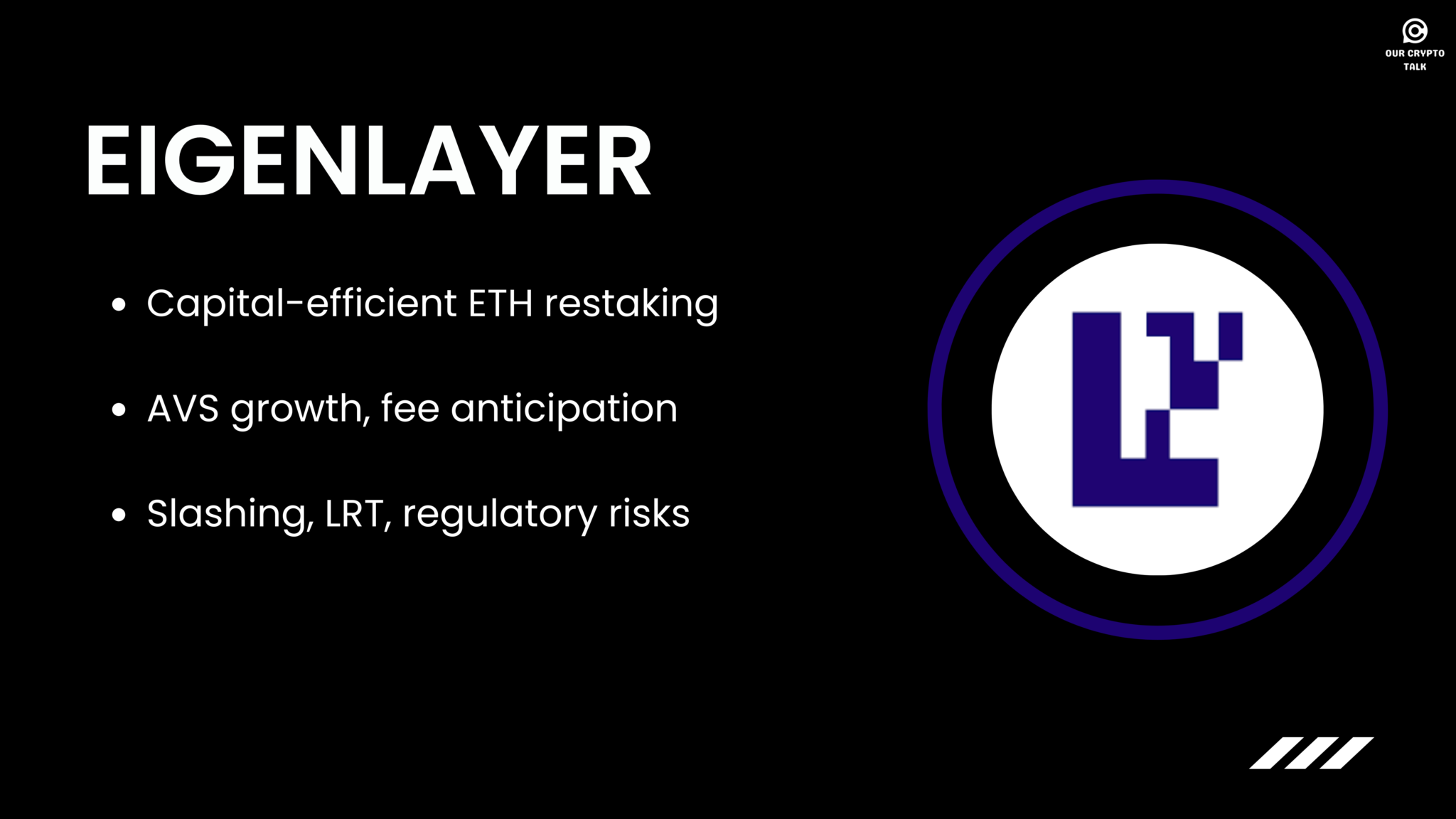
What it does: Pendle splits yield-bearing assets into Principal Tokens (PT) and Yield Tokens (YT) so users can lock in fixed yields or speculate on future rate changes. A specialized AMM prices time-decaying yield streams.
Why TVL is high:
Risks to watch:

What it does: Spark is a lending market integrated with the DAI ecosystem (and yield-bearing sDAI). Users borrow against blue-chip collateral while tapping Maker-linked liquidity.
Why TVL is high:
Risks to watch:
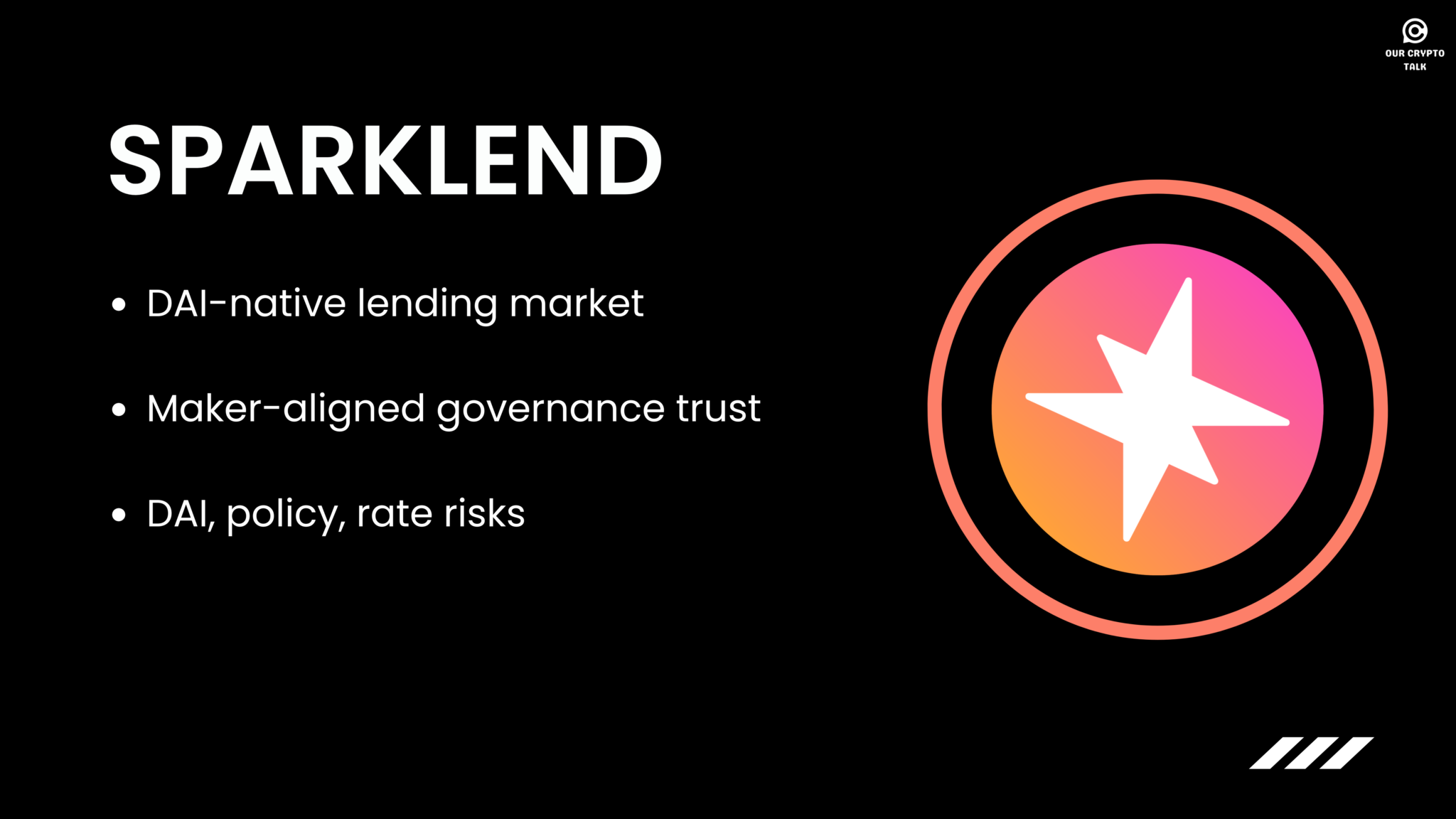
What it does: Sky aggregates and optimizes yields across chains, routing liquidity toward the best opportunities with an emphasis on capital efficiency.
Why TVL is high:
Risks to watch:
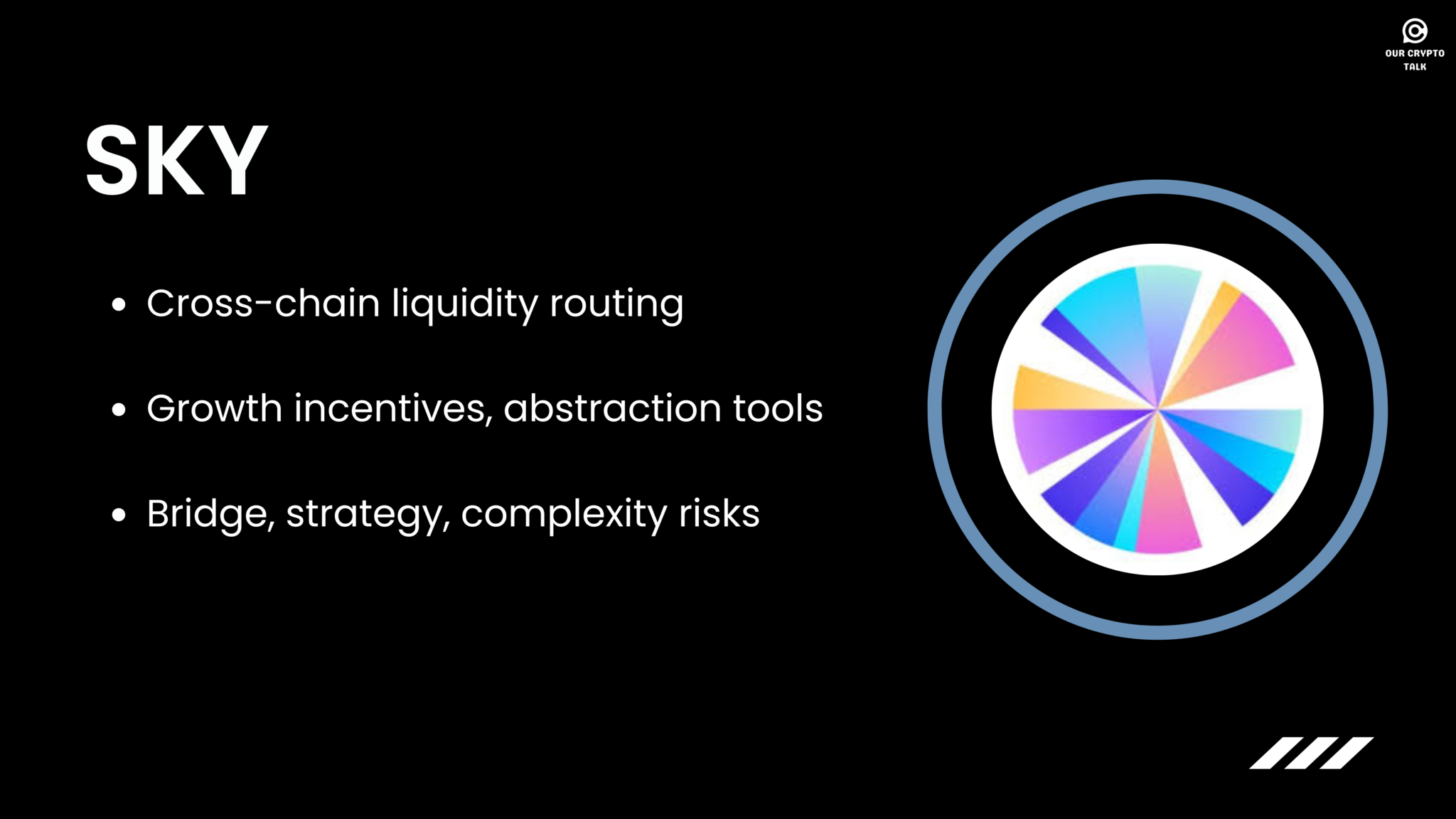
What it does: Rocket Pool is a decentralized Ethereum staking protocol that lowers the barrier for node operators and ETH holders. Users can stake as little as 0.01 ETH and receive rETH, a liquid staking token that accrues staking rewards. For those wanting to run nodes, Rocket Pool allows operation with just 8 ETH plus RPL collateral, compared to 32 ETH for solo staking.
Why TVL is high:
Risks to watch:
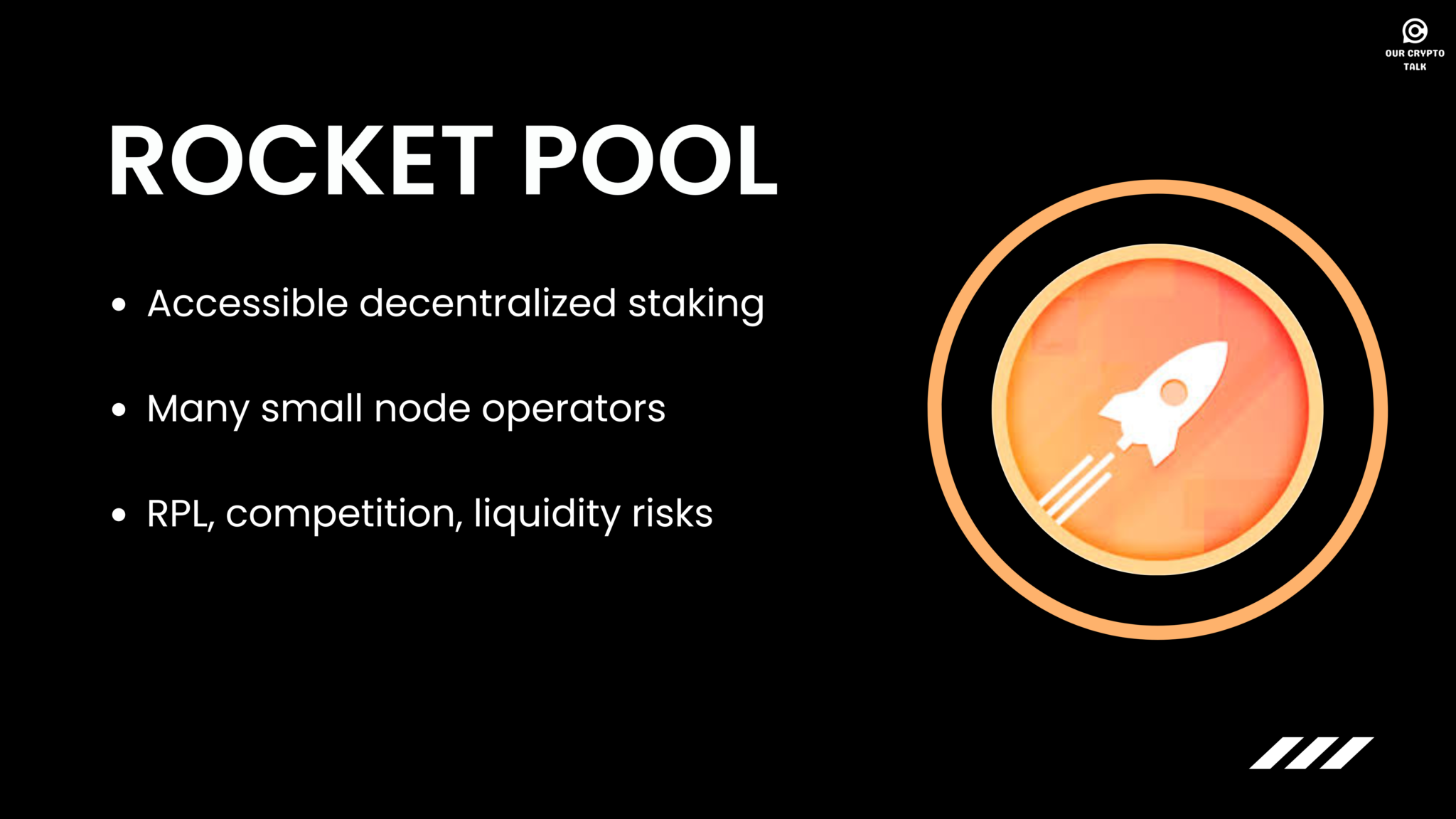
What it does: Morpho is a next-generation DeFi lending protocol that enhances existing lending markets like Aave and Compound by matching lenders and borrowers directly on a peer-to-peer basis. Instead of everyone passively depositing into a shared pool, Morpho tries to pair counterparties to give both sides better rates while still falling back to the underlying pool for unmatched liquidity.
Why TVL is high:
Risks to watch:
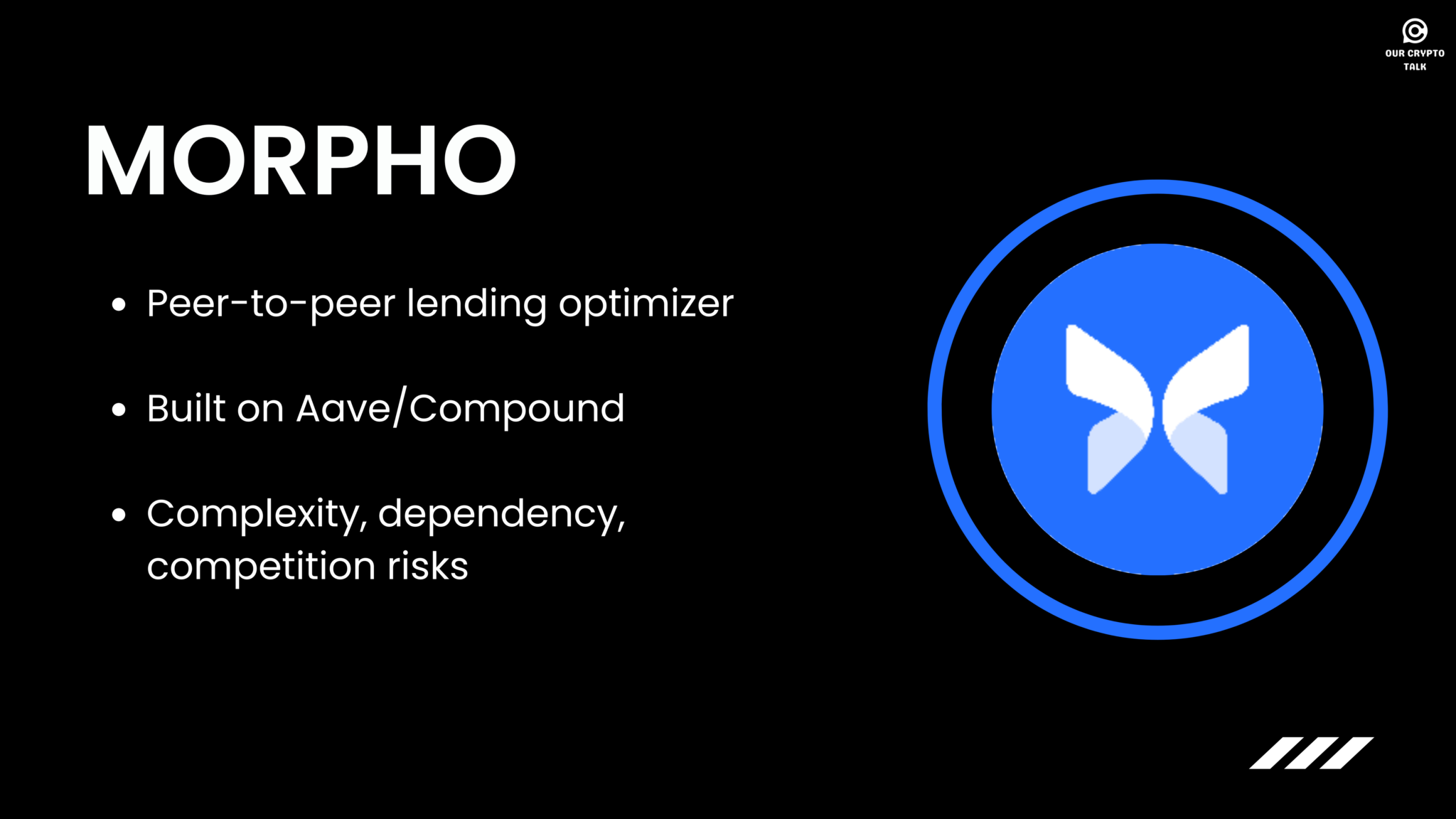
| Protocol | Focus | TVL (August 2025) | Why TVL Is High | Risks to Watch |
|---|---|---|---|---|
|
|
Tracking DeFi protocols by TVL helps you see where capital and confidence are flowing. But to separate signal from noise, pair TVL with composition, security, and real usage. Among DeFi protocols by TVL, Aave and Lido still anchor core money markets and staking, while EigenLayer, Pendle, and others show how fast new primitives can scale.
When people compare DeFi protocols by TVL, they often miss the “quality of deposits” question answering it is where strong theses come from. In practice, portfolios that monitor DeFi protocols by TVL alongside risk controls tend to handle regime shifts better. Ultimately, using DeFi protocols by TVL as your headline metric and layering the checklist above keeps your analysis sharp as the cycle evolves.


| Liquid staking for ETH (stETH) |
| $36.1B |
| Frictionless staking UX; massive DeFi composability; strong network effects |
| stETH peg/liquidity under stress; operator concentration; governance tradeoffs |
|
| Money market (multi-chain lending/borrowing) | $34.7B | Broad asset coverage; integrations & institutional pilots; flash-loan/product moat | Rate/oracle volatility; long-tail collateral risk; governance/cap changes |
|
| Non-custodial liquid (re)staking | $13.0B | Key ownership model; growing DeFi/restaking integrations | Validator robustness; restaking correlation risk; liquidity depth of receipts |
|
| Synthetic dollar & yield via hedged strategies | $12.9B | Attractive yields; “stable value” use case; wallet/money-market integrations | Model/hedge breakdown in volatility; venue counterparty risk; structural complexity |
|
| ETH restaking for AVSs | $10.5B | Capital efficiency on staked ETH; new AVS market draws builders/speculators | Correlated slashing; LRT stack/peg complexity; regulatory uncertainty |
|
| Tokenized future yield (PT/YT + AMM) | $9.1B | Demand for fixed/variable yield trades; pairs well with LSTs/LRTs | Rate volatility & long-dated liquidity; contract complexity; upstream collateral risk |
|
| Maker-aligned money market (DAI/sDAI) | $7.6B | Native DAI loop + sDAI yield; trust from Maker alignment | Reliance on DAI policy/liquidity; rate shocks affecting collateral/borrows |
|
| Cross-chain yield & liquidity routing | $6.6B | Incentives + auto-routing across chains; abstracts bridging/compounding | Bridge/multi-chain risk; strategy complexity & path-dependency |
|
| Decentralized ETH staking (rETH) | $5.57B | Low entry (0.01 ETH); node ops from 8 ETH + RPL; rETH accepted in DeFi | rETH peg/liquidity in stress; validator economics; protocol governance |
|
| P2P lending optimizer atop Aave/Compound | $4.89B | Better matched rates; inherits major liquidity; higher capital efficiency | Matching/route complexity; dependency on underlying pools; oracle/rate shocks |